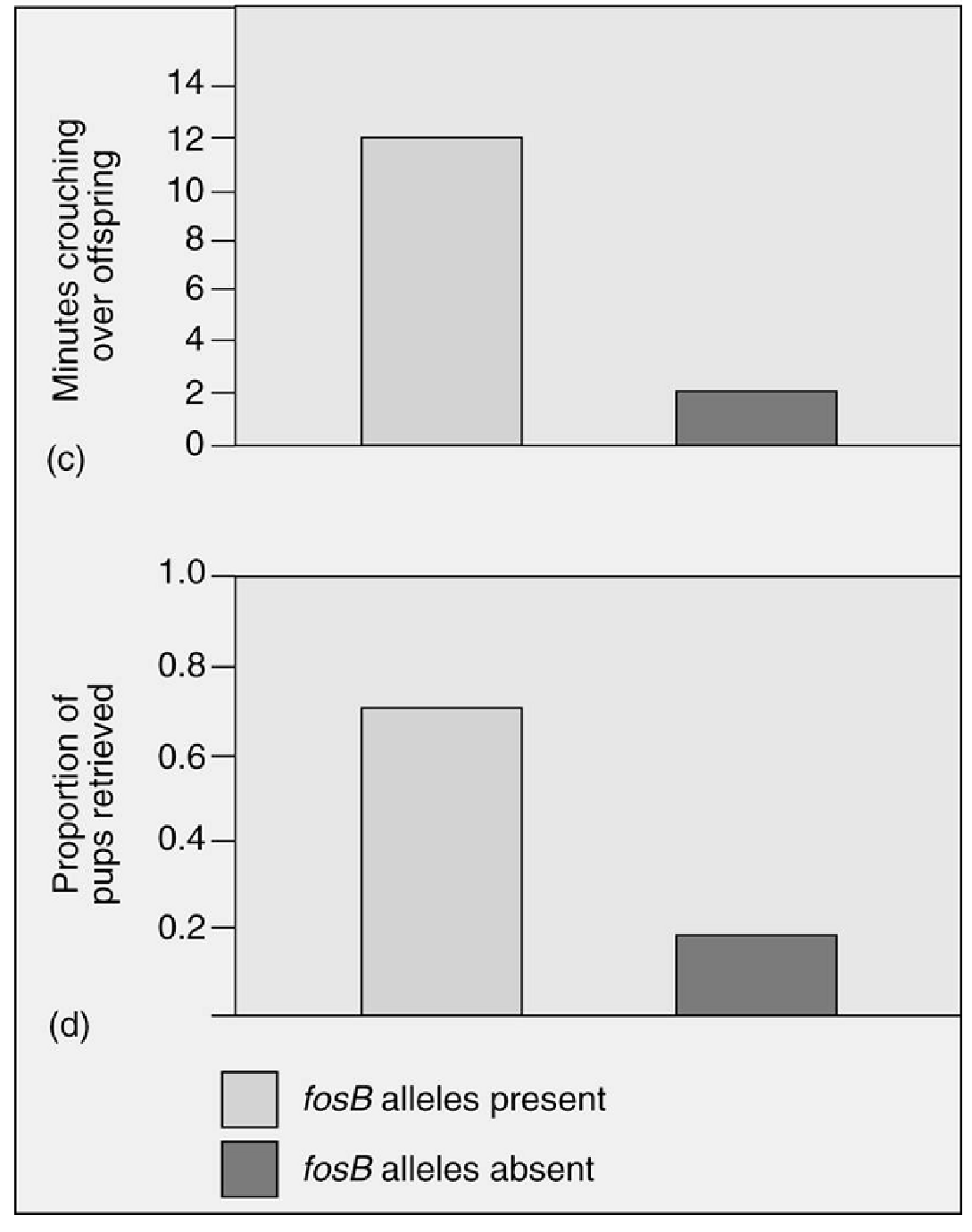Which of the following is an appropriate interpretation for these graphs?

Maternal care (as measured by minutes crouching over offspring and proportion of pups retrieved) in female mice that have the fosB allele is
A. less than the maternal care given by female mice without the fosB allele.
B. greater than the maternal care given by female mice without the fosB allele.
C. the same as the maternal care given by female mice without the fosB allele.
D. less than the maternal care given by female mice without the fosB allele; however, the graphs depict only minor differences, which are most likely not significant.
E. not possible to determine from the data.
Clarify question:
What is the key concept addressed by the question?
What type of thinking is required?
Gather Content:
What do you already know about the relationship between maternal behavior and a particular allele? What other information is related to the question?
Choose Answer:
Given what you now know, what information is most likely to produce the correct answer?
Reflection on Process:
Did your problem-solving process lead you to the correct answer? If not, where did the process break down or lead you astray? How can you revise your approach to produce a more desirable result?
B. greater than the maternal care given by female mice without the fosB allele.
Clarify question:
What is the key concept addressed by the question?
This question requires the interpretation of a graph. The data on the graph show the relationship between intensity of material behavior and the presence/absence of a particular allele.
What type of thinking is required?
This is an evaluation question, you are being asked to look at the choices being presented and pick the best one.
Gather Content:
What do you already know about the relationship between maternal behavior and a particular allele? What other information is related to the question?
What do you know about this situation? Genes can control behaviors. Providing maternal care to offspring can increase their survivability, increasing their fitness. Alleles are forms of a gene. Which group has the highest level of maternal behaviors?
Choose Answer:
Given what you now know, what information is most likely to produce the correct answer?
Mice with fosB allele spend much longer crouching over their infants, and retrieve a great proportion of their pups when they are separated from them. These behaviors demonstrate maternal care provided to the infants. The choice that says “greater than the maternal care given by female mice without the fosB allele” is the correct answer.
Reflection on Process:
Did your problem-solving process lead you to the correct answer? If not, where did the process break down or lead you astray? How can you revise your approach to produce a more desirable result?
Were you able to select the correct answer? You were being asked to look at a graph, evaluate a series of statements and pick the choice that best fit the graph. This question is linked to the section in the textbook that describes the relationship between genes and behavior. In this example the presence of one allele was strongly associated with an increase in the intensity of maternal care, providing evidence for a link between the observed behavior (maternal care) and the genes that underlie that behavior.
You might also like to view...
Genes from different sources that are related in sequence due to shared evolutionary ancestry are called ________ genes, and groups of such genes are known as ________
A) homologous / gene families B) paralogous / functional genes C) orthologous / gene families D) homologous / functional genes
Cellular adaptive immunity is carried out by ________.
A) B cells B) T cells C) bone marrow D) neutrophils
In magnesium-deficient plants the older leaves show more severe symptoms of chlorosis which is a yellowing of the leaves than younger leaves. What is the best explanation?
A. There is more time for the symptoms to develop in older leaves. B. Scarce magnesium is removed from older leaves and translocated to support younger, more active leaves. C. Chlorophyll is transported from the older leaves to the younger leaves. D. Older leaves need less chlorophyll. E. Magnesium is more soluble in younger leaves.
Amino acids are converted to substrates of the Citric acid cycle by (beta-oxidation/deamination/transamination).
Fill in the blank(s) with the appropriate word(s).